The Most Dangerous Ski Resort in the French Alps Is Coming Out of Hiding. Should You Go?
La Grave Freeride Ski Resort, an extreme ski mecca in the southern French Alps’ narrow Romanche River Valley, shouldn’t be confused with a ski resort in the traditional sense. Rather, it’s a tiny village sporting a gargantuan peak—and a tight alpine community bound to some of the most wildly spectacular big mountain skiing on the planet. Savvy skiers from all over the world gravitate to La Grave for its massive vertical terrain, where runs are measured in the multiple thousands of feet. Some are nearly 7,000 feet long. There’s no spring skiing like it anywhere. Up until now, it’s been a well-guarded secret.
During “busy” times, La Grave’s parking lot at the base has no more than 100 cars. You won’t find any tony streets sprinkled with hotels and condos here, nor any ski patrollers, lazy groomer runs, or mid-station après-ski throngs. So why haul your ski gear here? Because La Grave is home to some of the most intense skiing in the French Alps or anywhere else. If you can hack the heady terrain, or yearn for an adventure community akin to, say, Yosemite in the ‘60s, it’s like no place else—though that may very soon be changing.
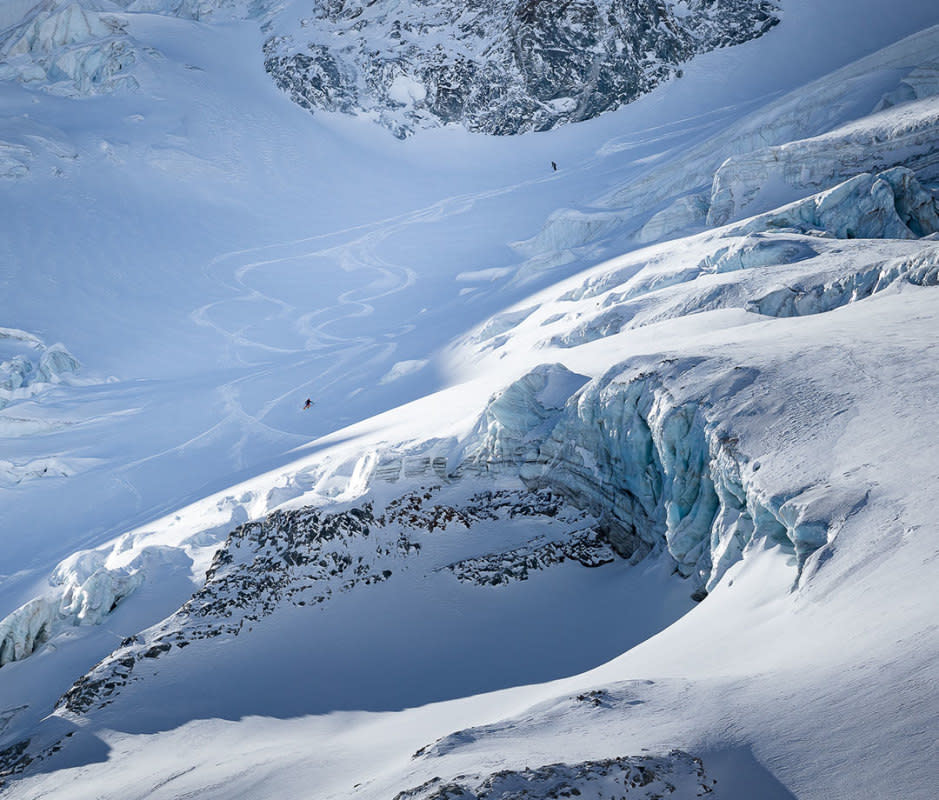
Sarah Grangeon
In the past, intel on La Grave was scarce. Locals, photographers, and writers used fake names to prevent the town from becoming “the next Chamonix.” It was referred to as Vallée X or Val Terces (spell that last word backward). Not that tourists and the unprepared didn’t show up, if not en masse. While many ski resorts are more about status, sponsorship, socializing, and shopping, La Grave really is all about skiing. Its core community isn’t jonesing to turn pro or seek notoriety. The sole endeavor here is finding purpose in skiing dangerous terrain. Even more than its legendary couloirs and extreme glacier runs, the prevalence of that raw, unadorned quest is what makes La Grave a special place.
I’ve skied just about everywhere, and generally avoid writing about my favorite secret slopes. During my first few seasons in La Grave, I adhered to that rule. Then, this winter, two things changed my mind.
Related: Our Testers Call This Ski the Best of All Time
First, I accepted that La Grave is clearly not for everyone and likely won’t ever risk being overrun. The far greater risk here is getting lost, avalanched, or accidentally jettisoned off a cliff. No sane person would ski La Grave without a guide, at least for the first few days to get your bearings. Skiers comforted by groomers, patrolled terrain, and avalanche mitigation will likely give this place a pass. I’ve decided there’s no real risk of wrecking it simply by putting the word out.
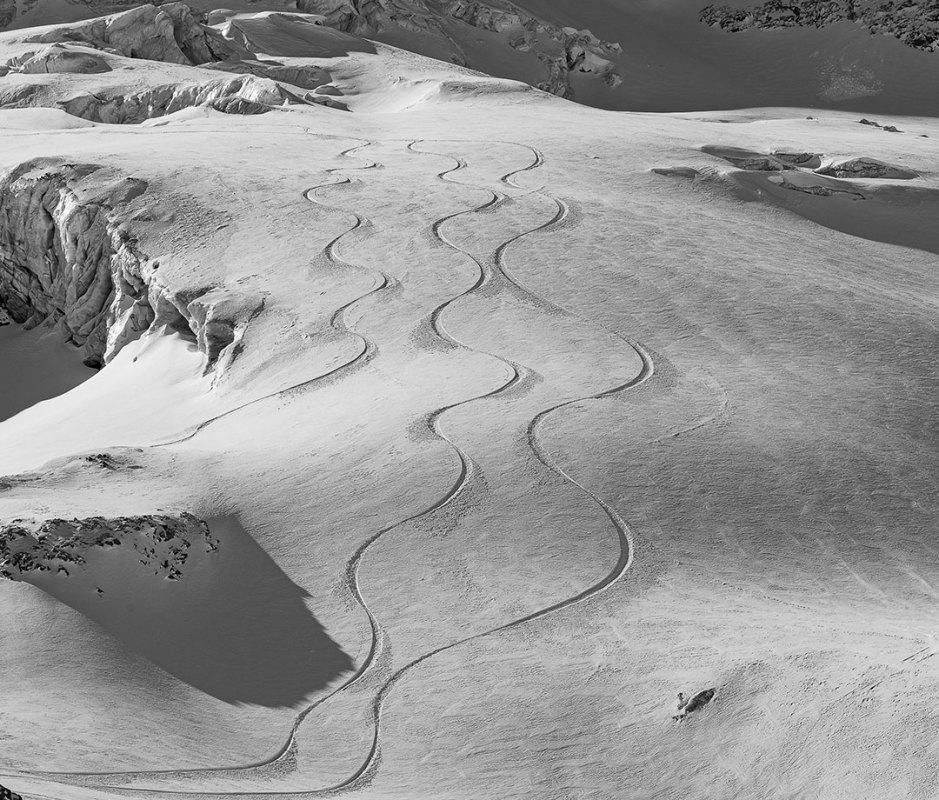
Sarah Grangeon
The other reason is quite different, and pressing: La Grave is on the verge of an existential crisis. A current plan in the works to extend an existing cable car system to the summit of La Grave’s remote Girose Glacier would effectively blur the line between anti-establishment La Grave and its neighboring ski-tourism hub of Les Deux Alpes on the opposite side of the mountain. Connecting the two adjacent spots (otherwise a world apart) could bring unprecedented commercialization and traditional ski tourism to Vallée X. It could unfold tiny, cloistered La Grave into one of the biggest ski domains in the French Alps.
Related: This Stunning Alpine Playground Is America's Top Winter Getaway
Right now, the ski area is still wild (sauvage, as the French say), with no groomers except for a short ribbon of snow accessed by a 45-minute cable car ride from town to 10,500 feet, followed by an uphill hike, PistenBully tow, and drag lift up the Girose Glacier. That’s a long way to go for a few minutes of piste glory. Otherwise, the La Grave Cable Car (téléphérique), on the northern edge of vast Ecrins National Park, offers access to ski freedom—featuring hundreds of miles of steeps, with massive glaciers, tight couloirs, knife-blade peaks, snow-shrouded cols, dense larch glades—and no rules.
La Grave offers no traditional ski patrol, no rescue except via helicopter, no avalanche control, and no grooming. But change is on the horizon. The biggest question here now is: Will the world’s most dangerous ski area be tamed?
Skiing in La Grave has rightfully taken on mythical status, which will only be heightened by talk of monumental changes in the pipeline. This is my third season in La Grave. The first was a two-month stint, followed by three months—then four. Like cocaine and car racing, La Grave is highly addictive. Here are 10 reasons why La Grave should be on every serious skier’s bucket list, and what to know before taking the plunge.
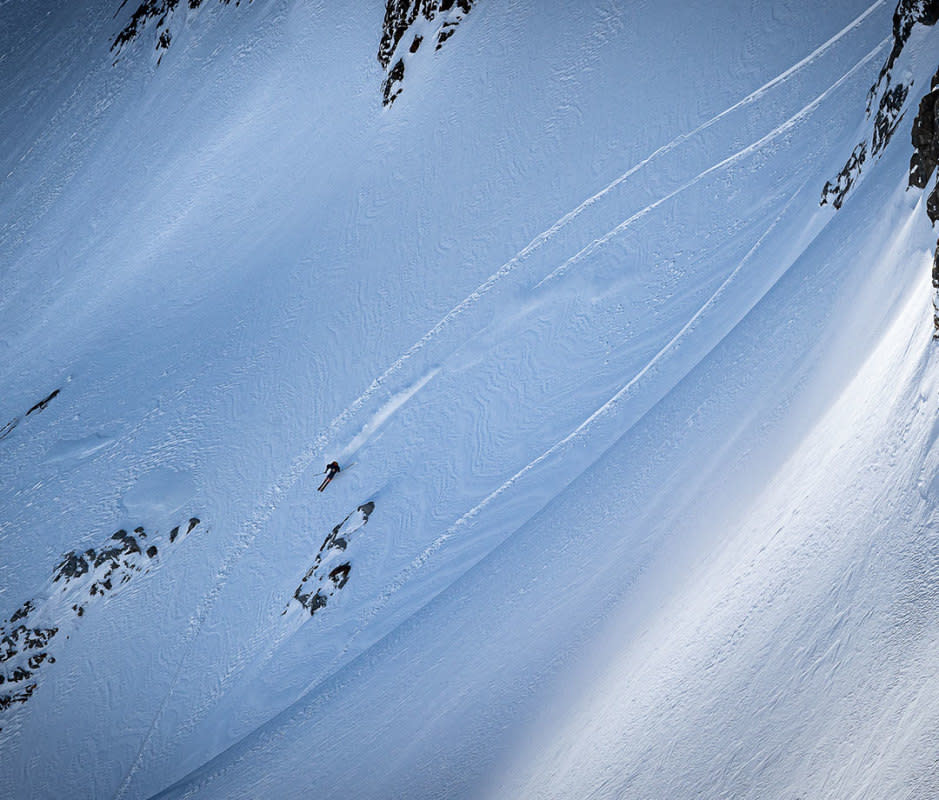
Sarah Grangeon
10 Things You Need to Know About La Grave Freeride Ski Resort
1. La Grave Is a Dangerous Ski Area—With Very Qualified Guides
First, the graver news: La Grave is dangerous—though the name comes from gravel, not “the grave,” as the crumbling mountains and Romanche River create lots of rock. Among the sparse ski set here, there’s an understanding that things can go wrong quickly. Skiing La Grave solo requires mountaineering, glacier, and route-finding skills—and an ability to handle whatever the mountains throw at you, whether it’s the deepest powder you’ve ever experienced or wind-packed slabs, ice, sub-surface rocks, poor visibility, or all of the above. And still, things can go wrong.
There are a few deaths every year at La Grave, generally attributable to inexperience, hot-shit syndrome, and plain bad luck. Rocks lurk under the surface, like great whites on 40-plus degree slopes in the shadow of La Meije, the castellated 13,067-foot peak that was the last great summit in the Alps to be conquered (in 1877). Whiteouts occur with little warning, and there are avalanches and crevasses. Many legendary couloirs, like the Trifides and the Voute, require rope-handling skills beyond what you learn in the climbing gym. Slightly “mellower” routes down the Girose Glacier would be considered double black diamonds anywhere else.
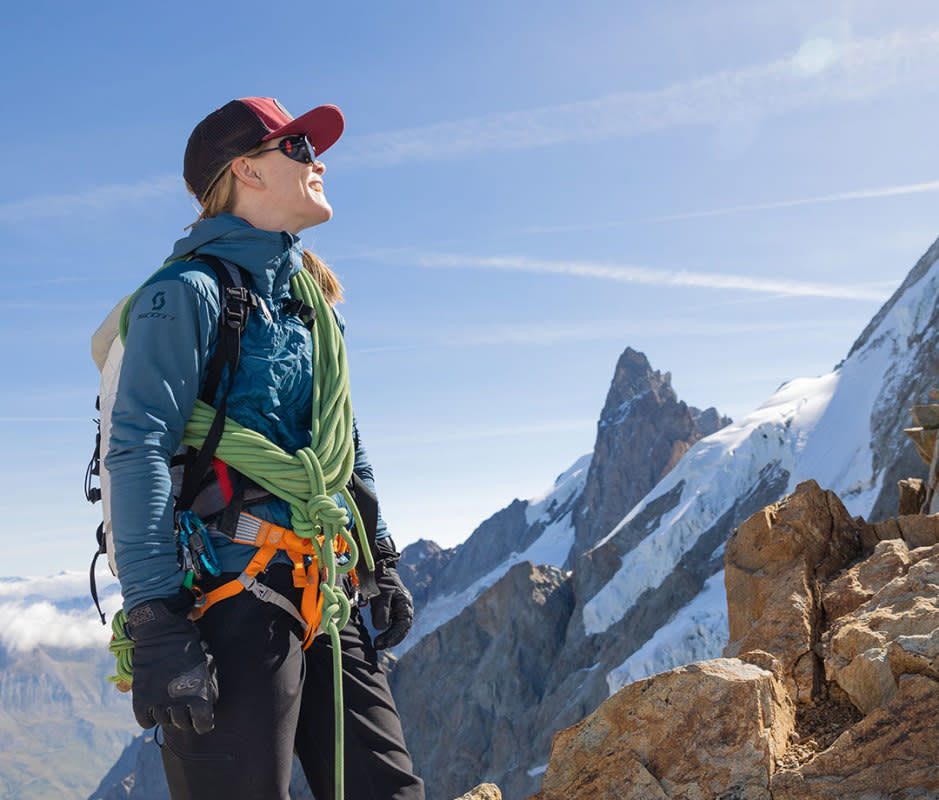
Sarah Grangeon
Now, the better news: La Grave is equipped with some of world’s top guides, who will lead solid skiers through one of the most remarkable ski experiences available anywhere. You can book American ski legend (and La Grave local) Joe Vallone here, or top France-based mountain guide Erin Smart. Smart’s husband Benjamin Ribeyre is also a ski and mountaineering guide and an elite professional rock and ice climber.
Strong intermediates can ski or snowboard La Grave, and your time in Vallée X will make you a better, more confident skier, regardless of your level. While there’s no traditional ski patrol here, there are Les Patrouileurs de La Grave—a handful of highly skilled skiers with emergency response training who provide info about mountain conditions and can supply ground support for helicopter rescues and other on-mountain emergencies. Also, Aeon, the group that operates the lift in La Grave (as well as Les 2 Alpes and Alpe Huez), has first-rate, highly trained staff.
When you ski La Grave, you’re responsible for your own safety. That’s why guides play a major role here. You wear a harness, carry a pack with an avalanche kit (and an avi air bag on powder days), and frequently tote an ice axe, screws, crampons, and skins. Across from the téléphérique station is Bureau de Guides, with top-notch experts on everything from skiing to ice climbing to mountaineering.
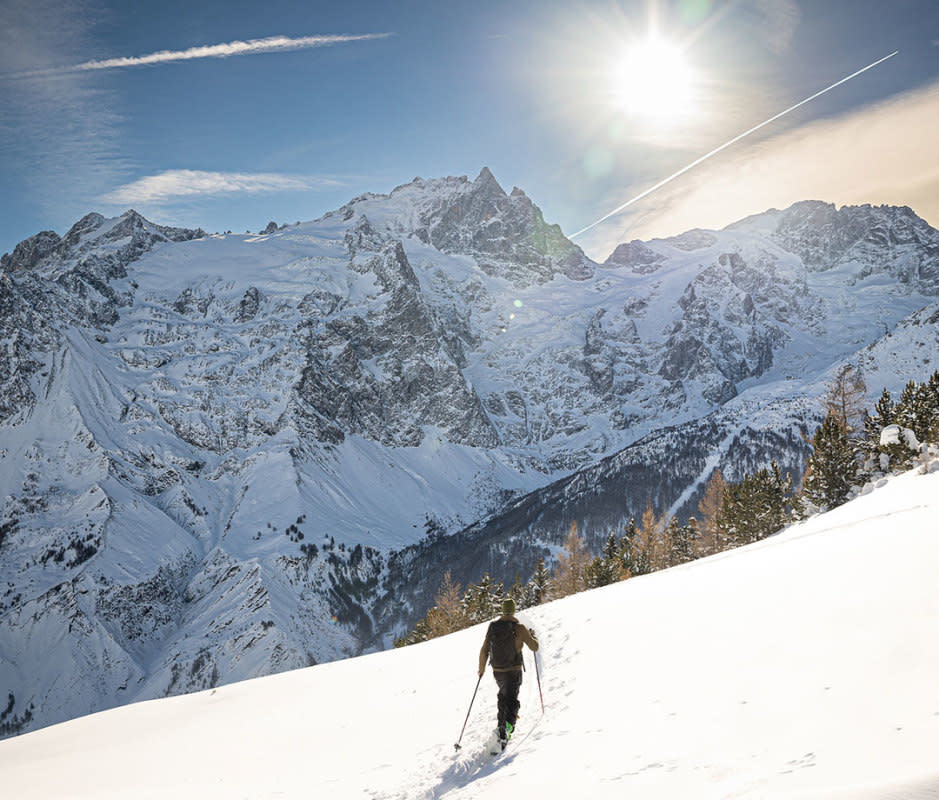
Sarah Grangeon
2. There Are Only Two Rules on the Slopes of La Grave—but They’re Big Ones
French culture is based on liberty, equality, and fraternity—concepts still fervently believed in by the French today. Skiing and snowboarding in La Grave represent all three: no rules (liberty); skiing transcends age, gender, and social class (equality); a tight local bond in the village of La Grave (fraternity). Despite the “no rules” vibe, there are actually a couple of crucial ones when skiing La Grave. First, never ever duck a rope. In those very few places where a rope is marking terrain, chances are the area requires a rappel. Second, never follow ski tracks, as they could have been made by a speed wing flyer and lead into a couloir that requires rappels, or simply be terrain where things get real (i.e., potentially deadly) fast.
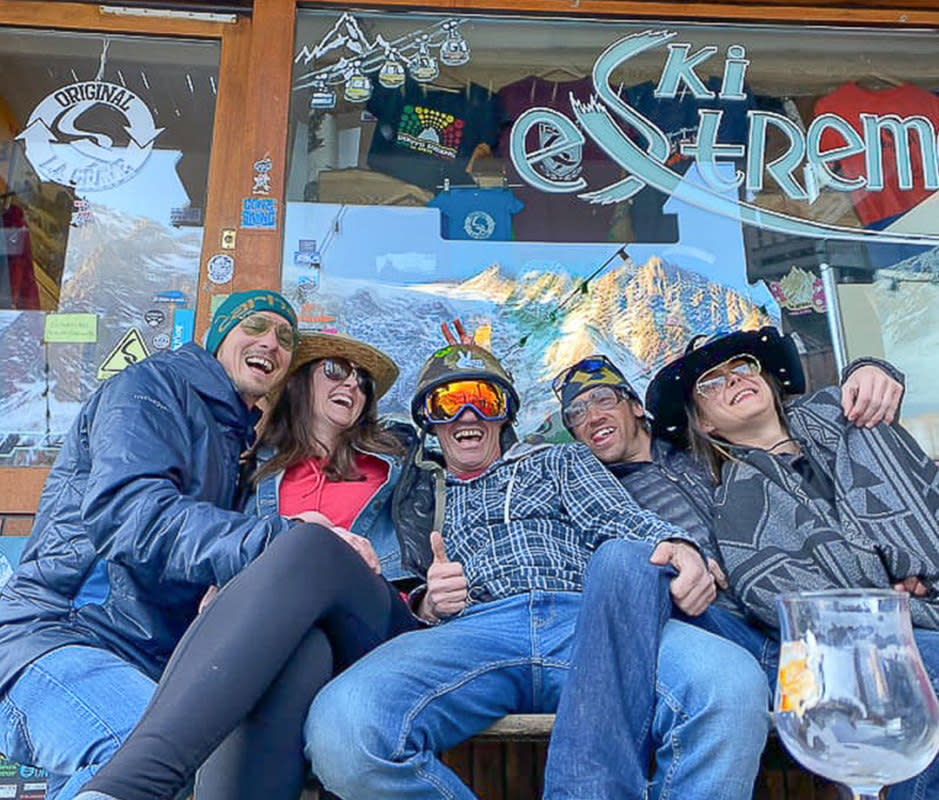
Sarah Grangeon
3. La Grave Is Not a Fashion Show
La Grave is populated with devoted skiers and snowboarders of all ages and nationalities who share a single bond: pure love of the mountains. The general ski population here consists of ski bums, local-born crushers, legendary guides, expats, and stray long weekend drop-ins. You can easily recognize the skiers in La Grave; the village thrives on anti-fashion. Haute couture includes duct tape chic, patched puffies, sliced boot cuffs, and mismatched apparel that’s more hippie than hipster. Headbands are in and retro-sunglasses a must. In La Grave, passion for skiing and the mountains unites people, not how they look, what they wear, or their investment portfolio.
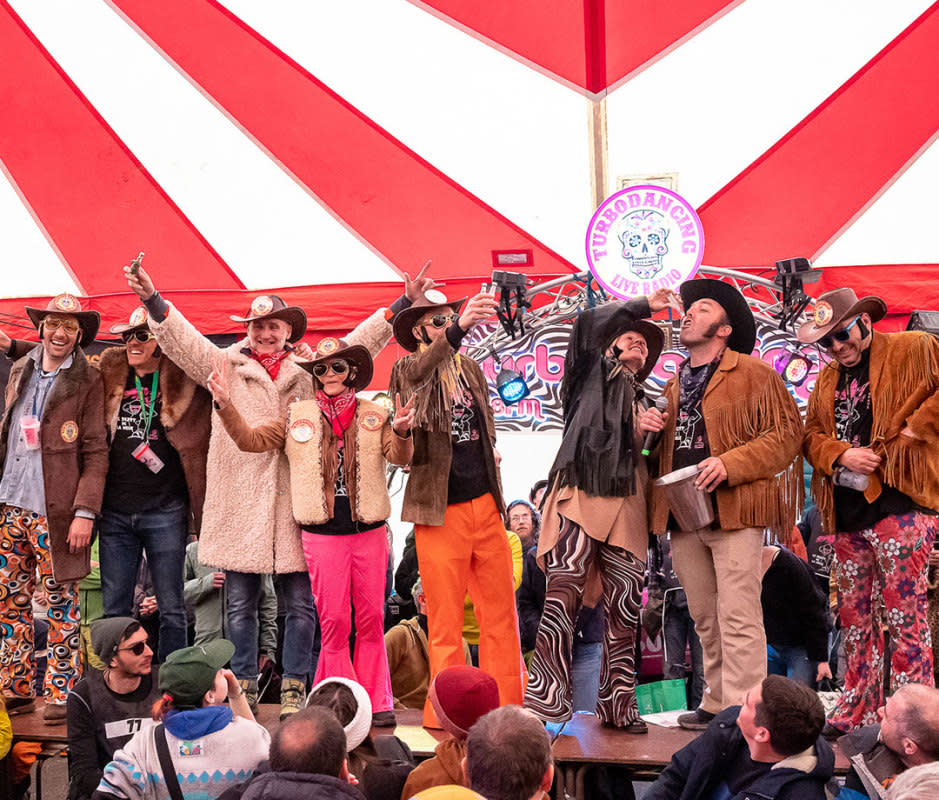
Sarah Grangeon
4. La Grave Is Home to the Wildest Ski Race (and Party) in the Alps
There are big mountain freeride races, and then there’s the king of them all—The Derby de la Meije. Held annually in La Grave since 1989, the Derby attracts some 1,000 ski racers from dozens of countries. Anyone can enter, and there are categories for alpine, telemarking, monoskiing, snowboarding, and any contraption with brakes.
Derby racers—individuals and teams—compete for the best time between the starting line at Col de la Lauze (the top of the drag lift) and the end point some 5,000 vertical feet down. The fastest racers make the elevator-like drop in a harrowing five to six minutes, covering terrain that normally takes an hour or two. While there are always World Cup and even Olympic ringers in the race, plenty of contestants enter simply to have fun and be part of one of the world’s most exuberant three-day ski parties, complete with live music and dancing into the early hours. Costumes are encouraged.
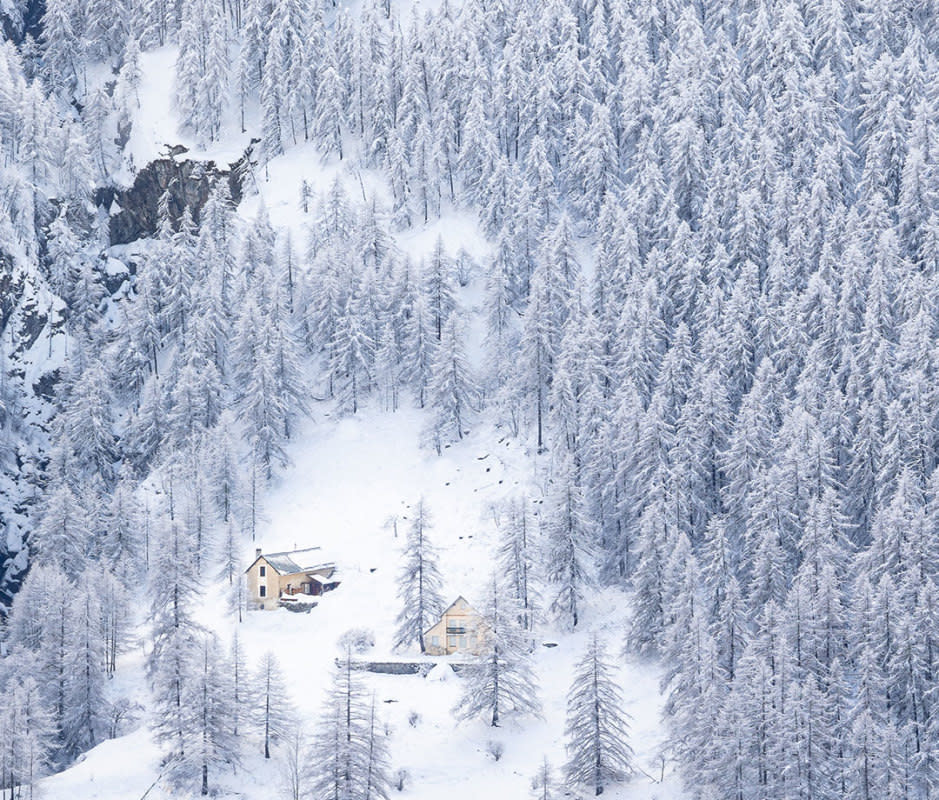
Sarah Grangeon
5. La Grave Offers Bountiful Backcountry Hut Touring
Ski touring and hut routes are epic around La Grave, which is furnished with miles of untracked terrain and no crowds. Nearby is Col du Lautaret, a jumping-off spot for dozens of ski tours and one of Europe’s best snowkiting/speed wing destinations. Several refuges (mountain huts) in the area provide bunks, hot meals, and drinks. The Evariste Chancel Refuge, accessed from the La Grave Téléphérique, provides both lunch and overnight lodging, while the Pic Du Mas De La Grave Refuge, across the valley, and Refuge du Goléon Hut offer more breathtaking scenery, warm beds, and locally sourced food. From the top of La Grave, with a guide, you can drop into the tiny village of St. Christophe on the other side of La Meije, or do the multi-day La Meije Traverse.
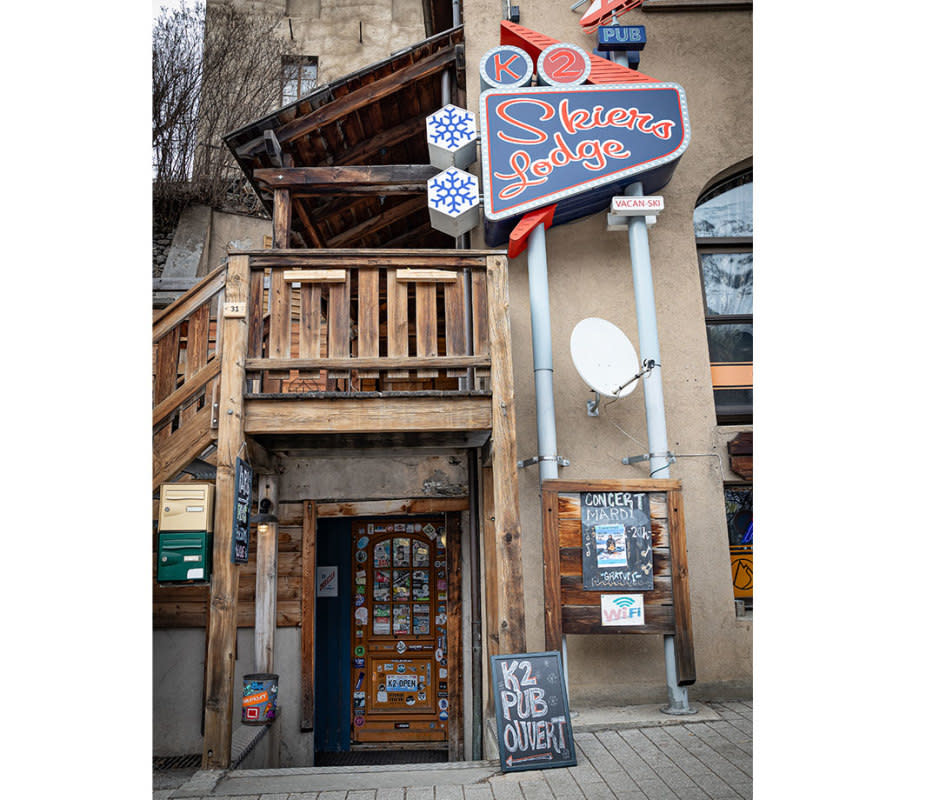
Sarah Grangeon
As for accommodations back in La Grave, visitors can stay at the all-inclusive Skiers Lodge, operated by Pelle Lang, the former Swedish freestyle ski champion, whose reputation in La Grave was cemented by his 1991 first descent of the Pan de Rideau, a 52-degree couloir. The Snowlegend, another great choice, offers rental gear.
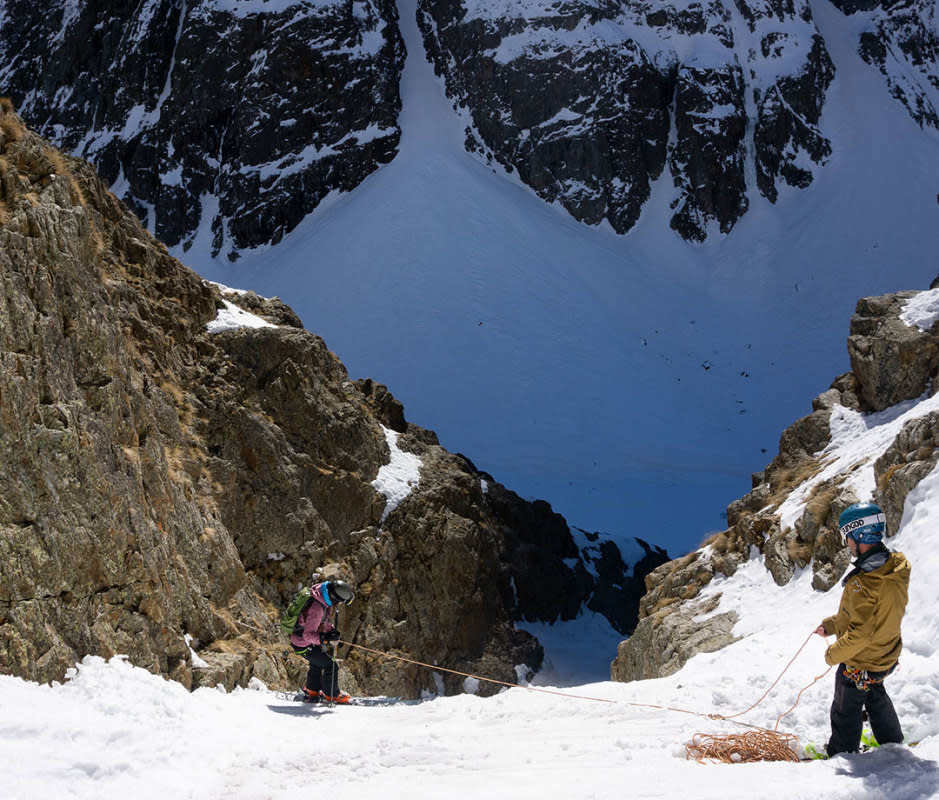
Sarah Grangeon
6. Tamer Slopes Are Nearby if La Grave Isn't Your Speed
If you need a chill, relaxed ski day, or have less experienced skiers in your group, some excellent ski areas nearby provide numerous options for all levels. About 10 minutes from La Grave, the charmingly mom-and-pop resort of Chazelet is very family-friendly. About an hour and a half away, resorts in Les Deux Alpes, Alpe D’Huez, Serre Chevalier, and Mongenévre offer hundreds of miles of groomed slopes, lively après-ski bars, and plenty of restaurants and hotels.
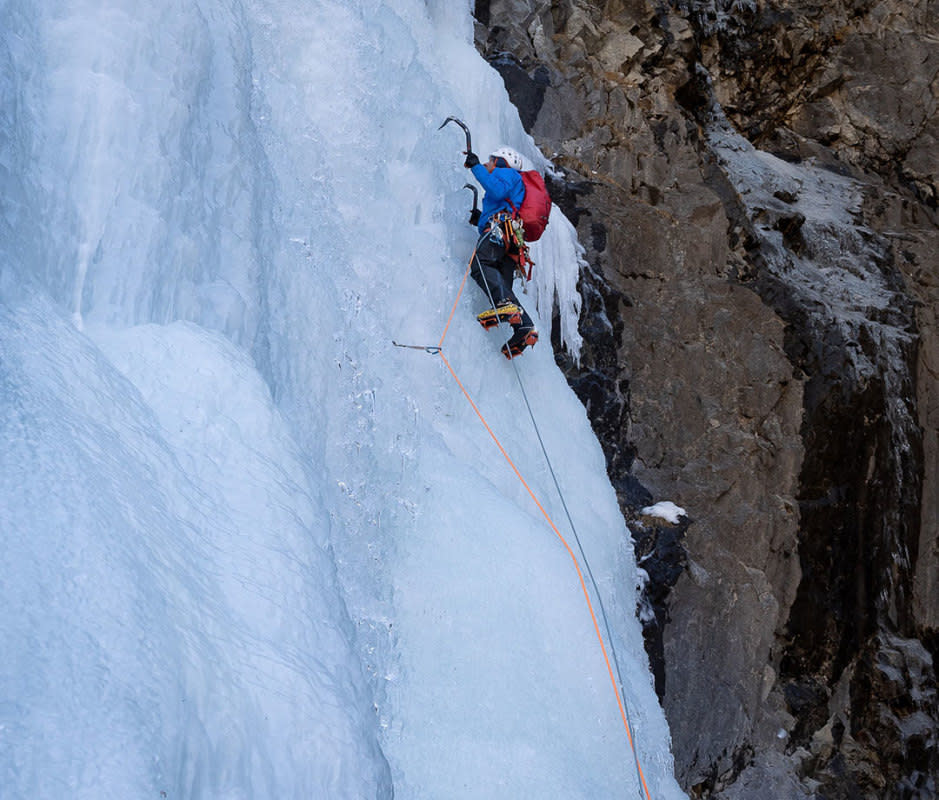
Sarah Grangeon
7. Some of Europe’s Best Ice Climbing Can Be Found in and Around La Grave
The Romanche Valley is so tight that it gets very little sun in the winter. The benefit, aside from great powder, is plenty of frozen runnels and free-standing ice pillars that make the area an ice climbing hub. Ice climbing routes range from single pitch to all-day epics of more than 1,000 feet—and from an accessible La Gorge II/3 to standard-setting Diabolobite II/5+.
To freshen up your skills, head to Cascade du Villar d’Aréne, just a couple miles down the road from La Grave. Like in Ouray, CO, ice is “farmed” here—meaning there’s a pipe that ensures a continuous flow of water to refresh the climbing area. Plus, the Tyrolean Traverse across the Romanche River is worth the trip. Villar d’Aréne turns all exterior lights off at 11 p.m., making it a great place to stargaze at night after your climb.

Sarah Grangeon
8. You’ll Be Eating and Drinking Well in La Grave
For a small village, La Grave has great food and an active social scene. There’s live music at least two nights a week during the ski season at the K2 Pub. Hotel Castillan, across from the téléphérique, is where you’ll meet your guide in the morning for a coffee and fresh croissant, and later grab an after-ski beer (or three), rave about your day, and plan your next runs.
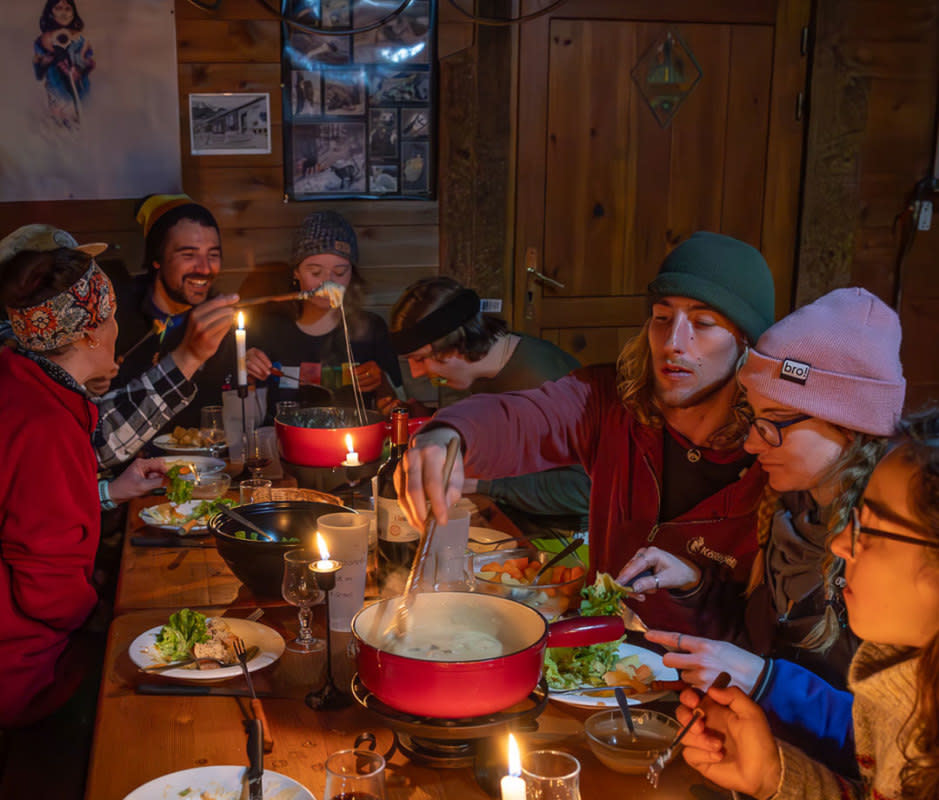
Sarah Grangeon
For dinner, Au Vieux Guide is known for its old-fashioned raclette, fondue Savoyard, and excellent wine list. In the village of Les Terrasses, a historic hamlet just above La Grave, eat (and stay) at Restauberge La Reine La Meije, offering a blend of Belgian and French food, along with a great selection of Belgian brews.
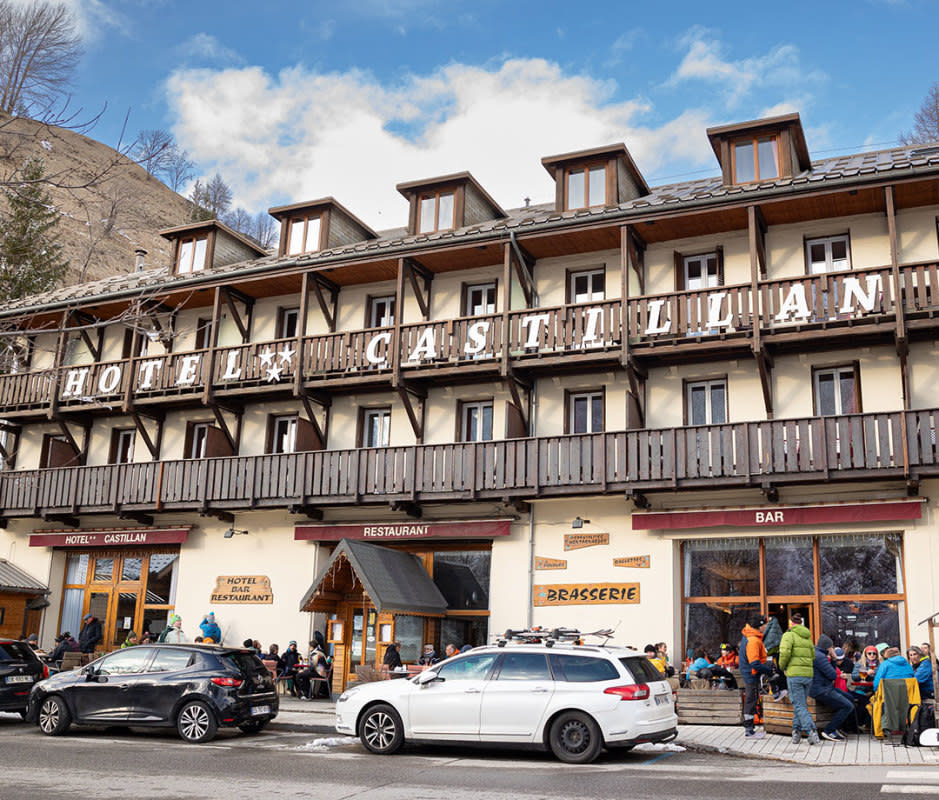
Sarah Grangeon
9. You Can Get All Your Ski and Safety Equipment in La Grave
La Grave may be small, but it’s well-equipped with core outdoor shops you can trust. Objective Meije and Skiset rent and sell all the ski, avalanche safety, and climbing gear you need. Original La Grave is more than just a boutique T-shirt and ski accessory shop; the owner, Bruno Florit, does all the designs himself and guides mountain biking in the summer. On sunny afternoons, the patio is the spot to hang out with friends, drink, and listen to live music.
For your old ski apparel (which will fit right in here), there’s now a sewing shop and boutique right in La Grave, Au Fil de La Meije, run by a master seamstress, Graça Cunha—who can sew new life into beloved threads and gear.
10. One of the Most Scenic Après-Ski Soaks in the Alps Is Just Down the Road
When your joints and limbs are ready to relax, head to Les Grand Bains du Monêtier. Just 25 minutes from La Grave, it’s one of most scenic thermal baths in the Alps. After your soak, head to Briançon to explore the massive Vauban fort (construction started in 1692) and the boutique shops and cafes that line the cobblestone streets inside the medieval malls.
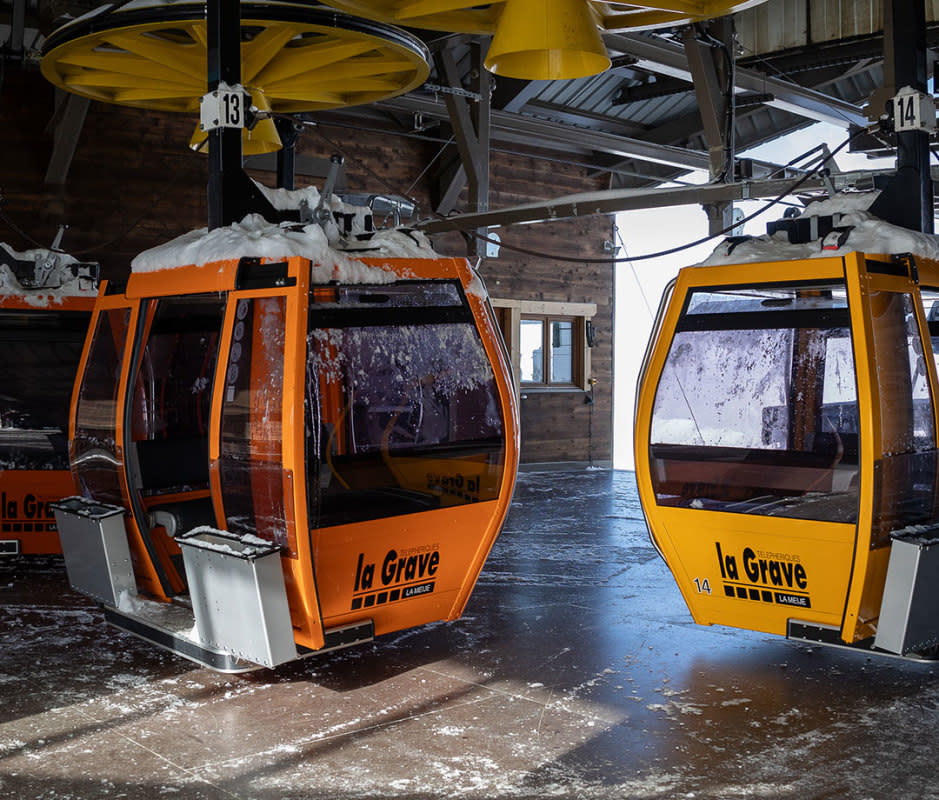
Sarah Grangeon
How to Get to La Grave, France
Getting to La Grave is a commitment and not for the fainthearted. The closest international airports are about three hours away in Lyon (France), Turin (Italy), and Geneva (Switzerland) via shotgun tunnels, surly switchbacks, and vertiginous roads on either side—plagued by avalanches, rockfall, and intemperate French drivers. The village is about one and a half hours from Grenoble and the Italian border.
Travelers from the U.S. can often find the best airfare into Geneva. Book a room at the affordable but well-appointed Hilton Geneva Hotel, equipped with an excellent bar, spa, and fitness center. It’s just five minutes from the airport, with shuttles every 15 minutes and quick access to public transportation and airport car rentals.
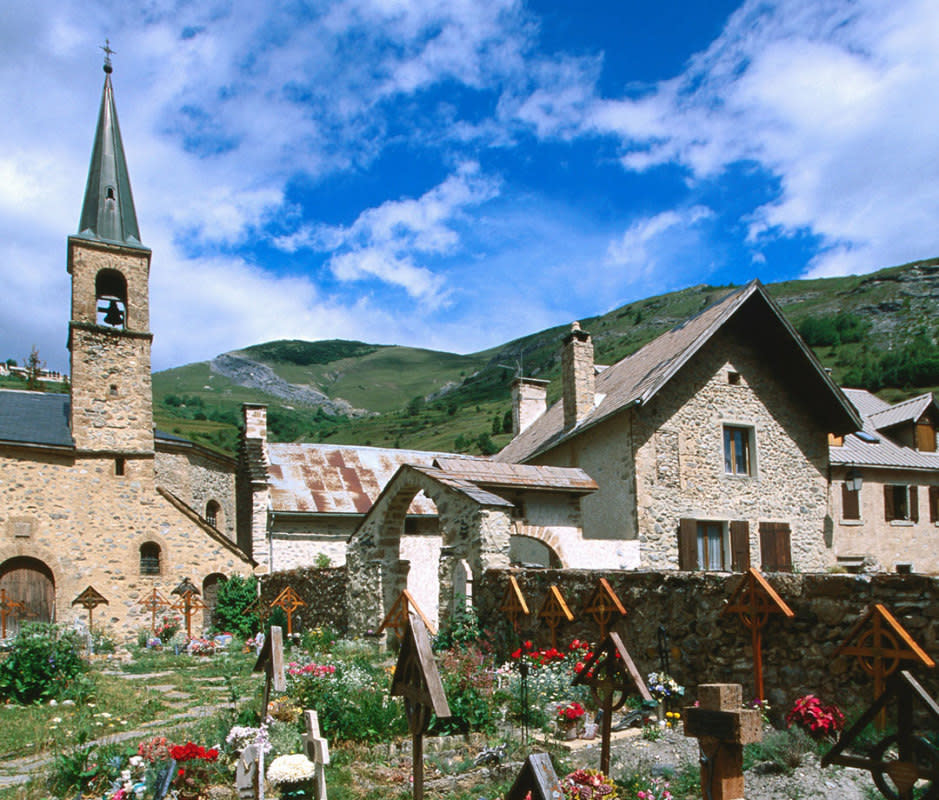
John Elk III/Getty Images
What Is the History of La Grave?
Once a medieval walled village, La Grave has deep roots, with its oldest church dating back to the 11th century and many homes built from natural rock. What is now Route National 1091 leading into the village started as a Roman road—with the “modern” version completed in 1859. In town, steep cobblestone streets are lined with old climbing ropes anchored to the sides of the buildings like an urban via ferrata in the icy winter months. About 400 people live in the village, plus a few hundred more scattered in tiny hamlets within a stone’s throw of town—but a thousand vertical feet up tortuous switchbacks.
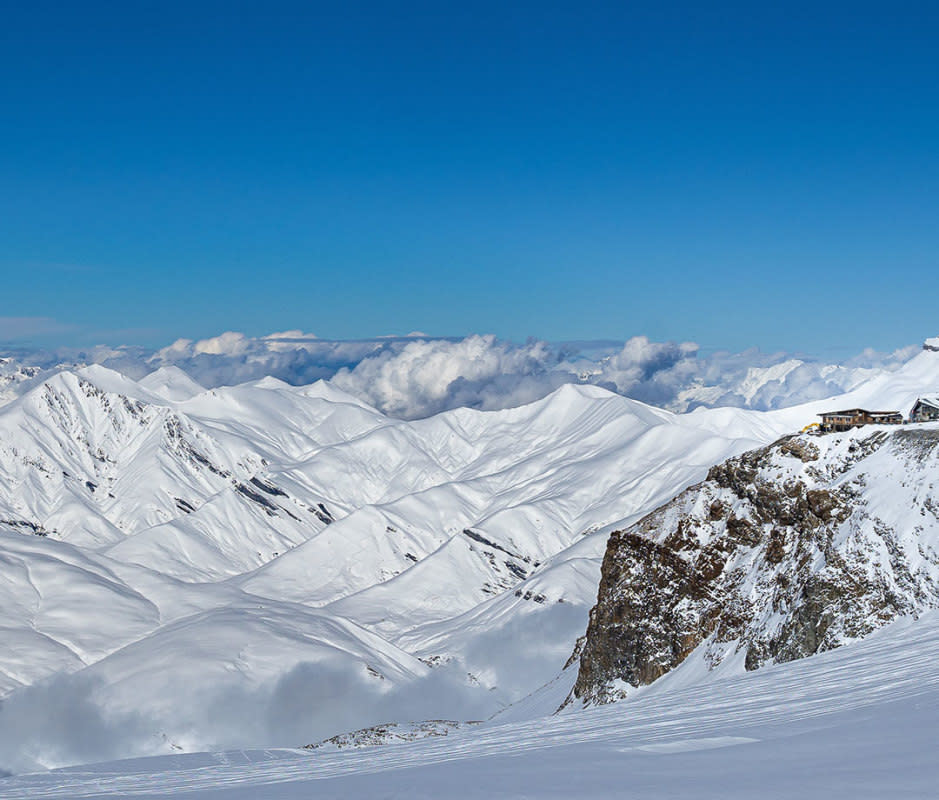
Sarah Grangeon
How La Grave Became the World’s Most Dangerous Ski Area
In the mid-1950s, La Grave (and many other French villages) faced an exodus of young people to the cities and a decline of agriculture as an economic base. La Grave’s leadership lit on the idea of tourism—in the form of building a cable car to deliver visitors up the village’s steep mountainside to the Girose Glacier and base of La Meije. Just 66 miles north, Chamonix had great success drawing alpine tourism with its Aiguille du Midi Cable Car—at the time the highest in the world.
La Grave moved ahead with a plan, but the 1973 formation of the 360-square-mile Ecrins National Park almost killed the idea. In 1975, the village (with the help of pioneer gondola designer Denis Creissels) built the La Grave Téléphérique La Meije to encourage summer tourism.
On July 14 (Bastille Day), 1976, the first stage of the gondola opened. More than 13,000 visitors rode it in the first two months. Then, in November of the same year, disaster struck. A dynamite-packed bomb exploded in the bottom lift station, shutting down operations for two years. In 1978, the La Grave Téléphérique reopened, with a second section that rose to 10,534 feet. The explosion’s perpetrator was never caught, though ecoterrorism was suspected.
What the developers of the original téléphérique didn’t expect was that a handful of ski bums, disenchanted with the burgeoning tourism in hot spots like Chamonix, Andermatt, and Zermatt, would discover that the gondola could be run in the winter months to deliver skiers and riders to the wild glaciers and slopes of La Meije.
The tram’s top station now sits on the Col des Ruillans at 10,534 feet with a cozy, hand-built log restaurant on top, La Cabine. It’s a community gathering place where locals, guides, tourists, and non-skiers congregate and enjoy the massive views (and ski access). On a clear day, you can see Mont Blanc in the distance; and out of sight due to the vertical relief, the village of La Grave, more than 6,000 feet below.
In 1989, again to the disgust of environmentalists, the Girose Drag Lift opened above the top gondola station; it was designed to increase ski access from 2 Alpes, the conventional ski resort on the other side of the mountain. Skiers from 2 Alpes could cross over the top of the glacier, grab some turns on the ribbon off-piste, and then ride the drag lift back up to the summit and ski back down to their luxury condos—basically a “walk on the wild side” for recreational skiers.
However, unprepared skiers ended up leaving the groomed run and ventured out onto the glacier with deadly consequences. That extreme higher ground had been the refuge of guides and individuals willing to earn their turns via bootpack or skins. On days when conditions permitted the drag lift to operate, anyone could take their chances on the heavily crevassed glacier.
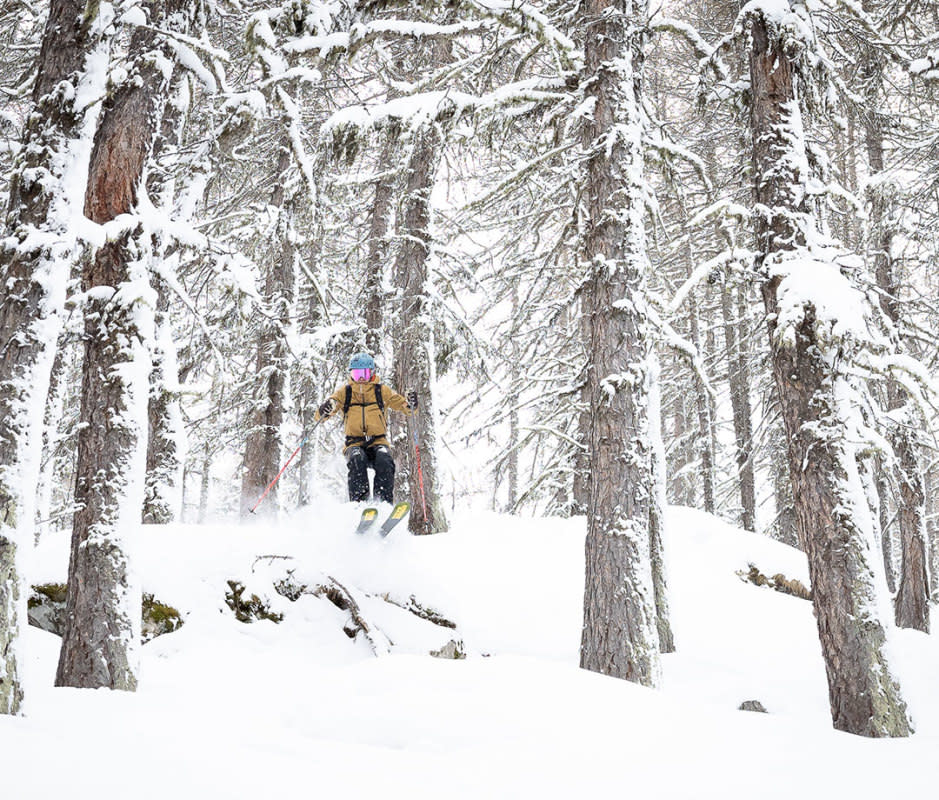
Sarah Grangeon
What Is the Future of La Grave?
Major development on the glacier is imminent at La Grave. The controversy is over the topmost 1,250 feet of the Girose Glacier that’s now partially served by the drag lift. SATA, the second largest mountain resort operator in France, which runs the nearby luxury resorts of 2 Alpes and Alpe d’ Huez, signed a 30-year lease in 2017 to manage the Téléphérique des Glaciers de la Meije.
Many people credited SATA with saving the téléphérique after the existing lease holder retired. SATA’s master plan (formed with La Grave officials who support development) includes replacing the drag lift with a 30-plus-person gondola—a surge from the existing cable cars that rise up to this proposed extension, which hold only six. Effectively, this would bisect the glacier, jutting out from what’s now the top station to the Dome de la Lauze at a dizzying 11,811 feet. Here, it would be visible to skiers atop 2 Alpes ski resort—and just a 10-minute ski-and-pole away.
Supporters of the plan argue that this extension will benefit La Grave’s local economy. Detractors say the natural barrier between the wild and woolly La Grave with the ski tourism hub of 2 Alpes will effectively be erased. The village is polarized over the issue, with many arguing that the glacier should be returned entirely to its natural state above 10,500 feet, accessible only to human-powered adventurers.
When work started on the new gondola in the autumn of 2023, environmental activists (many from out of town) staged protests on the glacier and shut down construction. Plans are on hold until later in 2024.
Will La Grave soon lose its hallowed Vallée X magic and “no rules” character—replaced with trail markers, groomed runs, avalanche mitigation, ski patrol, and snowmaking? Will the village’s tight housing market become even more exclusive? Will throngs of unprepared skiers from the other side tumble into crevasses and off of cliffs? There’s a very real fear that what makes La Grave special may be lost in a single season—and an equal excitement from proponents of change in a hallowed spot that has managed to mainly resist it until now.

